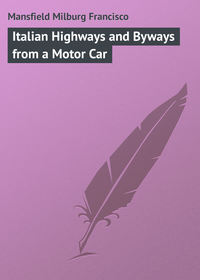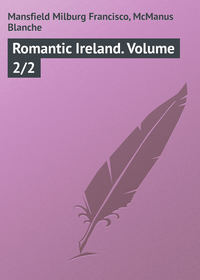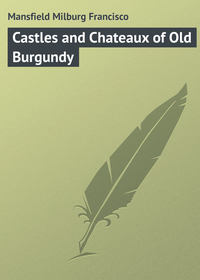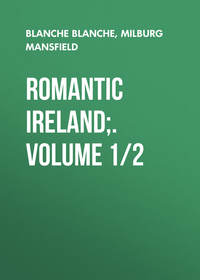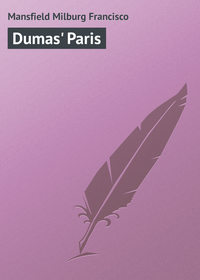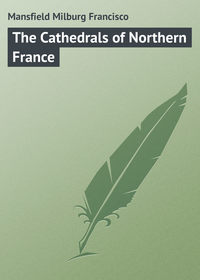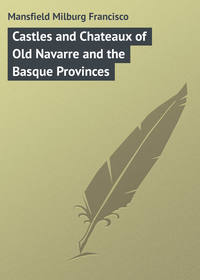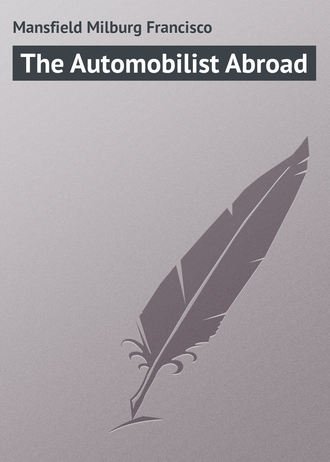 полная версия
полная версияThe Automobilist Abroad
The Binnenhof drew the romanticist of our party to it by reason of the memories of the brothers De Witt. It is an irregular collection of buildings of all ages, most of them remodeled, but once the conglomerate residence of the Counts of Holland and the Stadtholders.
The Binnenhof will interest all readers of Dumas. It was here that there took place the culminating scenes in the lives of the brothers De Witt, Cornelius and John. Dumas unquestionably manufactured much of his historical detail, but in the "Black Tulip" there was no exaggeration of the bloody incidents of the murder of these two noble men, who really had the welfare of Holland so much at heart.
We headed down the road to the sea, by the Huis-ten-Bosch (the House in the Wood), the summer palace of Dutch royalty, for the Monte Carlo of Holland, Scheveningen. It has all the conventional marks of a Continental watering-place, a plage, a kursaale, bath houses, terraces, esplanades, chic hotels and restaurants, and a whole regiment of mushroom chairs and windshields dotting its wide expanse of North Sea sand.
In the season the inhabitants live off of the visitors, and out of season live on their fat like the ground-hog, and do a little fishing for profitable amusement. It is a thing to see, Scheveningen, but it is no place for a prolonged stay unless you are a gambler or a blasé boulevardier who needs bracing up with sea air.
There are good hotels, if you want to linger and can stand the prices, the best of which is called the Palace Hotel, but we had another little black coffee on the gayest-looking terrace café we could find, and made wheel-tracks for Leyden, twenty kilometres distant.
The distances in Holland are mere bagatelles, but there is so much that is strange to see, and the towns of historical interest are so near together, that the automobilist who covers his hundred kilometres a day must be a scorcher indeed.
We passed the night at the Gouden-Leuw, which a Frenchman would call the Lion d'Or, and an Anglo-Saxon the Golden Lion. It was a most excellent hotel in the Breestraat, and it possessed what was called a garage, in reality a cubby-hole which, on a pinch, might accommodate two automobiles, if they were small ones.
Leyden is a city of something like fifty-five thousand people. It has grown since the days when they chained down Bibles in its churches, and books in the library of its university. The chief facts that stand out in Leyden's history, for the visitor, are those referring to the exile of the Puritans here, fleeing from persecution in England, and before they descended upon the New World.
The famous university was founded by the government as a reward for the splendid defence made by the city against the Spaniards in 1574. It was a question as to whether the city should be exempted from future taxation or should be endowed with a university. The citizens themselves chose the latter dignity.
Leaving Leyden and following the flat roadway by the glimmering canals, which chop the polders, and tulip gardens off into checker-board squares, one reaches Haarlem, less than thirty kilometres away.
The country was becoming more and more like what one imagines Holland ought to be; the whole country practically a vast, sandy, sea-girt land of dykes and canals, and dunes and sunken gardens.
Holland has an area of about twenty thousand square miles, and something over five million inhabitants, with the greatest density of population on the coast between Amsterdam, in the north, and Rotterdam, in the south, and the fewest in numbers in the region immediately to the northward of the Zuyder-Zee.
Wherever in Holland one strikes the brick roads, made from little red bricks standing on end, he is happy. There is no dust and there are no depressions in the surface which will upset the carburation and jar the bolts off your machine. It is an expensive way of road-building, one thinks, but it is highly satisfactory. Near Haarlem these brick roadways extend for miles into the open country in every direction.
Haarlem is the centre of the bulb country, the gardens where are grown the best varieties of tulips and hyacinths known over all the world as "Dutch bulbs." The tulip beds of the polders and sunken gardens of the neighbourhood of Haarlem are one of the great sights of Holland.
Besides bulbs, Haarlem is noted for its shiphung church, and the pictures by Franz Hals in the local gallery. There are other good Hals elsewhere, but the portraits of rotund, jolly men and women of his day, in the Haarlem Town Hall, are unapproached by those of any of his contemporaries. Fat, laughing burghers, roystering, knickerbockered Dutchmen and vrous gossiping, smoking, laughing, or drinking, are human documents of the time more graphic than whole volumes of fine writing or mere repetitions of historical fact. All these attributes has Haarlem's collection of paintings by Franz Hals.
There are all sorts of ways of getting from Haarlem to Amsterdam, by train, by boat, by electric tram, or by automobile over an idyllic road, tree-shaded, canal-bordered, and dustless. It is sixteen kilometres only, and it is like running over a causeway laid out between villas and gardens. Nothing quite like it exists elsewhere, in Holland or out of it. An automobile can be very high-geared, for there are no hills except the donkey-back bridges over the canals.
Amsterdam may properly enough be called the Venice of the North, and the automobilist will speedily find that an automobile boat will do him much better service in town than anything that runs on land.
There are half a million souls in Amsterdam, and hotels of all ranks and prices. The Bible Hotel is as good as any, but they have no garage, nor indeed have any of the others. There are half a dozen "Grands Garages" in the city (with their signs written in French – the universal language of automobilism), and the hotel porter will jump up on the seat beside you and pilot you on your way, around sharp corners, over bridges, and through arcades until finally you plump down in as up-to-date and conveniently arranged an establishment for housing your machine as you will find in any land.
Amsterdam's sights will occupy the visitor for a couple of days, and its art gallery for a day longer. We were taking only a bird's-eye view, or review, and stayed only over one night, not making even the classic excursion to those artists' haunts of Volendam, Monnikendam, and Marken, of which no book on Holland should fail to make mention.
These old Dutch towns of the Zuyder-Zee are unique in all the world, and Amsterdam is the gateway to them. An automobile is useless for reaching them. The best means are those offered by existing boat and tram lines.
For Utrecht one leaves Amsterdam via the Amstel Dyke and the Utrechtsche Zyde, and after forty kilometres of roadway, mostly brick-paved like that between Haarlem and Amsterdam, he reaches suburban Utrecht. Utrecht, with but a hundred thousand inhabitants, has suburbs, reaching out in every direction, that would do justice to a city five times it size. Most of Utrecht's population is apparently suburban, and is housed in little brick houses and villas with white trimmings and door-steps, a bulb garden, an iron fence, and a miniature canal flowing through the back yard. This is the formula for laying out a Utrecht suburban villa.
The Het Kasteel van Antwerpen, on the Oude Gracht, is a hotel which treats you very well for five or six florins a day, and allows you also to put your automobile under roof, charging nothing for the service. This is worth making a note of in a country where it usually costs from one to five francs a night for your automobile.
The chief sight of Utrecht is its cathedral, with a fine Gothic tower over a hundred metres in height. It is the proper thing to mount to its highest landing, whence one gets one of the most remarkable bird's-eye views imaginable. In a flat country like Holland, the wide-spread panoramas, taken from any artificial height, embrace an extent of the world's surface not elsewhere to be taken in by a glance of the eye. The Zuyder-Zee and the lowlands of the north stretch out to infinity on one side; to the east the silver-spreading streaks of the Waal and the Oude Rijn (later making the Rhine) lead off toward Germany. To the south are the green-grown prairies and windmill-outlined horizons of South Holland; and westward are the polders and dunes of the region between Amsterdam and Rotterdam, and even a glimpse, on a clear day, of the North Sea itself.
Our one long ride in Holland was from Utrecht to Nymegen, seventy-two kilometres. We left Utrecht after lunch and slowly made our way along the picture landscapes of the Holland countryside, through Hobbema avenues, and under the shadow of quaint Dutch church spires.
One does not go to a foreign land to enjoy only the things one sees in cities. Hotels, restaurants, and cafés are very similar all over Europe, and the great shops do not vary greatly in Rotterdam from those in Liverpool. It is with the small things of life, the doings of the butcher, the baker and the candlestick-maker that the change comes in. In Holland the housekeeper buys her milk from a little dog-drawn cart and can be waked at three in the morning, without fail, by leaving an order the night before with the "morning waker." If you do not have a fire going all the time, and want just enough to cook your dinner with, you go out and buy a few lumps of blazing coals. If it is boiling water you want for your coffee, you go out and buy it too. Holland must be a housekeeper's paradise.
Nymegen, on the Waal, cared for us for the night. On the morrow we were to cross the frontier and enter Germany and the road by the Rhine.
Nymegen and its Hotel Keizer Karel, on the Keizer Karel Plain, was a vivid memory of what a stopping-place for the night between two objective points should be.
The city was delightful, its tree-grown boulevards, its attractive cafés, the music playing in the park, and all the rest was an agreeable interlude, and the catering – if an echo of things Parisian – was good and bountiful. There was no fuss and feathers when we arrived or when we left, and not all the personnel of the hotel, from the boots to the manager, were hanging around for tips. The head waiter and the chambermaid were in evidence; that was all. The rest were discreetly in the background.
Chapter III
On The Road By The Rhine
We had followed along the lower reaches of the Rhine, through the little land of dykes and windmills, when the idea occurred to us: why not make the Rhine tour en automobile? This, perhaps, was no new and unheard-of thing, but the Rhine tour is classic and should not be left out of any one's travelling education, even if it is old-fashioned.
At Nymegen we saw the last of Holland and soon crossed the frontier. There were no restrictions then in force against the entrance of foreign automobiles, though we were threatened with new and stringent regulations soon to be put in force. (1906. A full résumé of these new regulations will be found in the appendix.) Legally Germany could demand eight marks a hundred kilos for the weight of our machine, but in practice all tourists were admitted free, provided one could convince the official that he intended to return across the frontier within a reasonable time.
As we crossed the railway line we made our obeisance to the German customs authorities, saluted the black and white barber's-pole stripes of the frontier post, and filled up our tanks with gasoline, which had now assumed the name of benzin, instead of benzine, as in Holland.
Emmerich, Cleves, Wesel, and Xanten are not tourist points, and in spite of the wealth of history and romance which surrounds their very names, they had little attraction for us. For once were going to make a tour of convention.
It is a fairly long step from Nymegen to Düsseldorf, one hundred and one kilometres, but we did it between breakfast and lunch, in spite of the difficulty of finding our way about by roads and regulations which were new to us.
The low, flat banks of the Rhine below Düsseldorf have much the same characteristics that they have in Holland, and, if the roadways are sometimes bad as to surface – and they are terrible in the neighbourhood of Crefield – they are at least flat and otherwise suited to speed, though legally you are held down to thirty kilometres an hour.
You may find anything you like in the way of hotel accommodation at Düsseldorf, from the Park Hotel on the Cornelius Platz, at Waldorf prices, to the modest and characteristic little German inn by the name of Prince Alexanders Hof, which is as cheap as a French hotel of its class, and about as good.
It is at Düsseldorf that one comes first into touch with the German institutions in all their completeness. Immediately one comes to the borders of the Rhine he comes into the sphere of world politics. The peace of Europe lies buried at the mouth of the Scheldt where the Rhine enters the sea, and not on the Bosphorus. "The Rhine is the King of Rivers," said a German politician, "and it is our fault if its mouth remains in the hands of foreigners." This is warlike talk, if you like, but if a German prince some day rises on the throne of Holland, there may be a new-made map of Europe which will upset all existing treaties and conventions.
Düsseldorf is a veritable big town, for, though it shelters two hundred and twenty-five thousand inhabitants, it is not "citified." It is one of the most lovely of Rhine towns, and is the headquarters of the Rhenish Westphalian Automobile Club.
To Cologne is thirty-seven kilometres, with the roads still bad, – shockingly so we found them, though we were assured that this is unusual and that even then they were in a state of repair. This was evident, and in truth they needed it.
The twin Gothic splendours of Cologne's cathedral rise high in air long before one reaches the confines of the city. Cologne is the metropolis of the Rhine country, and besides its four hundred thousand inhabitants possesses many institutions and industries which other Rhine cities lack.
Of hotels for automobilists at Cologne there are five, all of which will treat you in the real tourist fashion, and charge you accordingly, – overcharge you in fact. We did not have time to hunt up what the sentimentalist of the party always called "a quaint little inn," and so we put into one almost under the shadow of the cathedral (purposely nameless).
The sights of Cologne are legion. "Numerous churches, all very ancient" describes them well enough for an itinerary such as this; the guide-books must do the rest. The Kolner Automobile Club will supply the touring automobilist graciously and gratuitously with information. A good thing to know!
The beer and concert gardens of Cologne's waterside are famous, almost as famous as the relics of the "three kings" in the cathedral.
At Cologne the pictured, storied Rhine begins. A skeleton itinerary is given at the end of this chapter which allows some digression here for observations of a pertinent kind.
Let the traveller not be disappointed with the first glance at the river as he sees it at Cologne. He is yet a few miles below the banks which have gained for the stream its fame for surpassing beauty, but higher up it justifies the rhapsodies of the poet.
"A blending of all beauties; streams and dells,Fruit, foliage, crag, wood, corn-field, mountain, vine,And chiefless castles breathing stern farewellsFrom gray but leafy walls, where Ruin greenly dwells."And there they stand, as stands a lofty mind,Worn, but unstooping to the baser crowd,All tenantless, save to the crannying wind,Or holding dark communion with the cloud.There was a day when they were young and proud,Banners on high, and battles passed below:But they who fought are in a bloody shroud,And those which wav'd are shredless dust ere now,And the bleak battlements shall bear no future blow."Beneath battlements, within those walls,Power dwelt amidst her passions: in proud state,Each robber chief upheld his armed halls,Doing his evil will, nor less elateThan mightier heroes of a longer date.What want these outlaws conquerors should have?But History's purchas'd page to call them great?A wider space, an ornamented grave?Their hopes were not less warm, their souls were full as brave."The scenery, the history and legend, and the wines of the Rhine make up the complete list of the charms of the river for the enthusiastic voyager on its bosom or on its banks.
It is enjoyable enough when one is on the deck of a Rhine steamboat, or would be if one were not so fearfully crowded, but it is doubly so when one is travelling along its banks by roadways which, from here on, improve greatly.
The history and legend of the Rhine are too big a subject to handle here, but some facts about Rhine wine, picked up on the spot, may be of interest.
The true German is not only eloquent when speaking of the quality of the Rhine wines, but he claims for them also the honours of antiquity. One may be content to date their history back merely to the days of Probus, but others declare that Bacchus only could be the parent of such admirable liquor, and point to Bacharach as the resting-place of the deity when he came to taste the Rhine grapes, and set an example to all future tipplers. It would not have been out of place to call the Rhine the country of Bacchus. The Rhine, Moselle, Neckar, and Main are gardens of the vine; but the Germans have not been content with cultivating the banks of rivers alone, for the higher lands are planted as well. From Bonn to Coblenz, and from the latter city to Mayence, the country is covered with vineyards. The Johannisberger of "father" Rhine, the Gruenhauser or the Brauneberger of the Moselle, and the Hochheimer of the Main, each distinguish and hallow their respective rivers in the eyes of the connoisseur in wine.
The vineyards of the Rhine are a scene of surpassing beauty; Erbach, enthroned among its vines; Johannisberg, seated on a crescent hill of red soil, adorned with cheering vegetation; Mittelheim, Geisenheim, and Rüdesheim with its strong, fine-bodied wine, the grapes from which bask on their promontory of rock, in the summer sun, and imbibe its generous heat from dawn to setting; then again, on the other side, Bingen, delightful, sober, majestic, with its terraces of vines, topped by the château of Klopp. The river and its riches, the corn and fruit which the vicinity produces, all remind the stranger of a second Canaan. The Bingerloch, the ruins, and the never-failing vines scattered among them, like verdant youth revelling amid age and decay, give a picture nowhere else exhibited, uniting to the joyousness of wine the sober tinge of meditative feeling. The hills back the picture, covered with feudal relics or monastic remains, mingled with the purple grape. Landscapes of greater beauty, joined to the luxuriance of fruitful vine culture, can nowhere be seen.
The glorious season of fruition – the Vintage– is the time for the visit of a wine-lover to the Rhine. It does not take place until the grapes are perfectly mature; they are then carefully gathered, and the bad fruit picked out, and, with the stalks, put aside. The wine of the pressing is separated, most vom ersten druck, vom nachdruck. The more celebrated of the wines are all fermented in casks; and then, after being repeatedly racked, suffered to remain for years in large fudders of 250 gallons, to acquire perfection by time. The wines mellow best in large vessels; hence the celebrated Heidelberg tun, thirty-one feet long by twenty-one high, and holding one hundred and fifty fudders, or six hundred hogsheads. Tübingen, Grüningen, and Königstein (the last 3,709 hogsheads) could all boast of their enormous tuns, in which the white wines of the country were thought to mellow better than in casks of less dimensions. These tuns were once kept carefully filled. The Germans always had the reputation of being good drinkers, and of taking care of the "liquor they loved." Misson says in his "Travels," that he formerly saw at Nuremberg the public cellar, two hundred and fifty paces long, and containing twenty thousand ahms of wine.
The names and birthplaces of the different German wines are interesting. The Liebfrauenmilch is a well-bodied wine, grown at Worms, and generally commands a good price. The same may be said of the wines of Koesterick, near Mayence; and those from Mount Scharlachberg are equally full-bodied and well-flavoured. Nierstein, Oppenheim, Laubenheim, and Gaubischeim are considered to yield first growths, but that of Deidesheim is held to be the best.
The river Main runs up to Frankfort close to Mayence; and on its banks the little town of Hochheim, once the property of General Kellerman, stands upon an elevated spot of ground, in the full blaze of the sun. From Hochheim is derived the name of Hock, too often applied by the unknowing to all German wines. There are no trees to obstruct the genial fire from the sky, which the Germans deem so needful to render their vintages propitious. The town stands in the midst of vineyards.
The vineyard which produces the Hochheimer of the first growth is about eight acres in extent, and situated on a spot well sheltered from the north winds. The other growths of this wine come from the surrounding vineyards. The whole eastern bank of the Rhine to Lorich, called the Rheingau, has been remarkable centuries past for its wines. It was once the property of the Church. Near this favoured spot grows the Schloss-Johannisberger, once the property of the Church, and also of the Prince of Orange. Johannisberg is a town, with its castle (schloss) on the right bank of the Rhine below Mentz. The Johannisberger takes the lead in the wines of the Rhine. The vines are grown over the vaults of the castle, and were very near being destroyed by General Hoche. The quantity is not large.
Rüdesheim produces wines of the first Rhine growths; but the Steinberger, belonging to the Duke of Nassau, takes rank after the Schloss Johannisberger among these wines. It has the greatest strength, and yet is one of the most delicate, and even sweetly flavoured. That called the "Cabinet" is the best. The quantity made is small, of the first growth. Graefenberg, which was once the property of the Church, produces very choice wines which carries a price equal to the Rüdesheim.
Marcobrunner is an excellent wine, of a fine flavour, especially when the vintage has taken place in a warm year. The vineyards of Roth and Königsbach grow excellent wines. The wine of Bacharach was formerly celebrated, but time produces revolutions in the history of wines, as well as in that of empires.
On the whole the wines of Bischeim, Asmannshäusen, and Laubenheim are very pleasant wines; those of the most strength are Marcobrunner, Rüdesheimer, and Niersteiner, while those of Johannisberg, Geisenheim, and Hochheim give the most perfect delicacy and aroma. The Germans themselves say, "Rhein-wein, fein wein; Necker-wein, lecker wein; Franken-wein tranken wein; Mosel-wein, unnosel wein" (Rhine wine is good; Neckar pleasant; Frankfort bad; Moselle innocent).
The red wines of the Rhine are not of extraordinary quality. The Asmannshäuser is the best, and resembles some of the growths of France. Near Lintz, at Neuwied, a good wine, called Blischert, is made. Keinigsbach, on the left bank of the Rhine, Altenahr, Rech, and Kesseling, yield ordinary red growths.
The Moselle wines are secondary to those of the Rhine and Main. The most celebrated is the Brauneberger. The varieties grown near Treves are numerous. A Dutch merchant is said to have paid the Abbey of Maximinus for a variety called Gruenhauser in 1793, no less than eleven hundred and forty-four florins for two hundred and ninety English gallons in the vat. This wine was formerly styled the "Nectar of the Moselle."
These wines are light, with a good flavour. They will not keep so long as the Rhine wines, but they are abundant and wholesome. Near Treves are grown the wines of Brauneberg, Wehlen, Graach, Zeitingen, and Piesport. The wines of Rinsport and Becherbach are considered of secondary rank. The wines of Cusel and Valdrach, near Treves, are thought to be possessed of diuretic properties. In about five years these wines reach the utmost point of perfection for drinking. They will not keep more than ten or twelve in prime condition.




